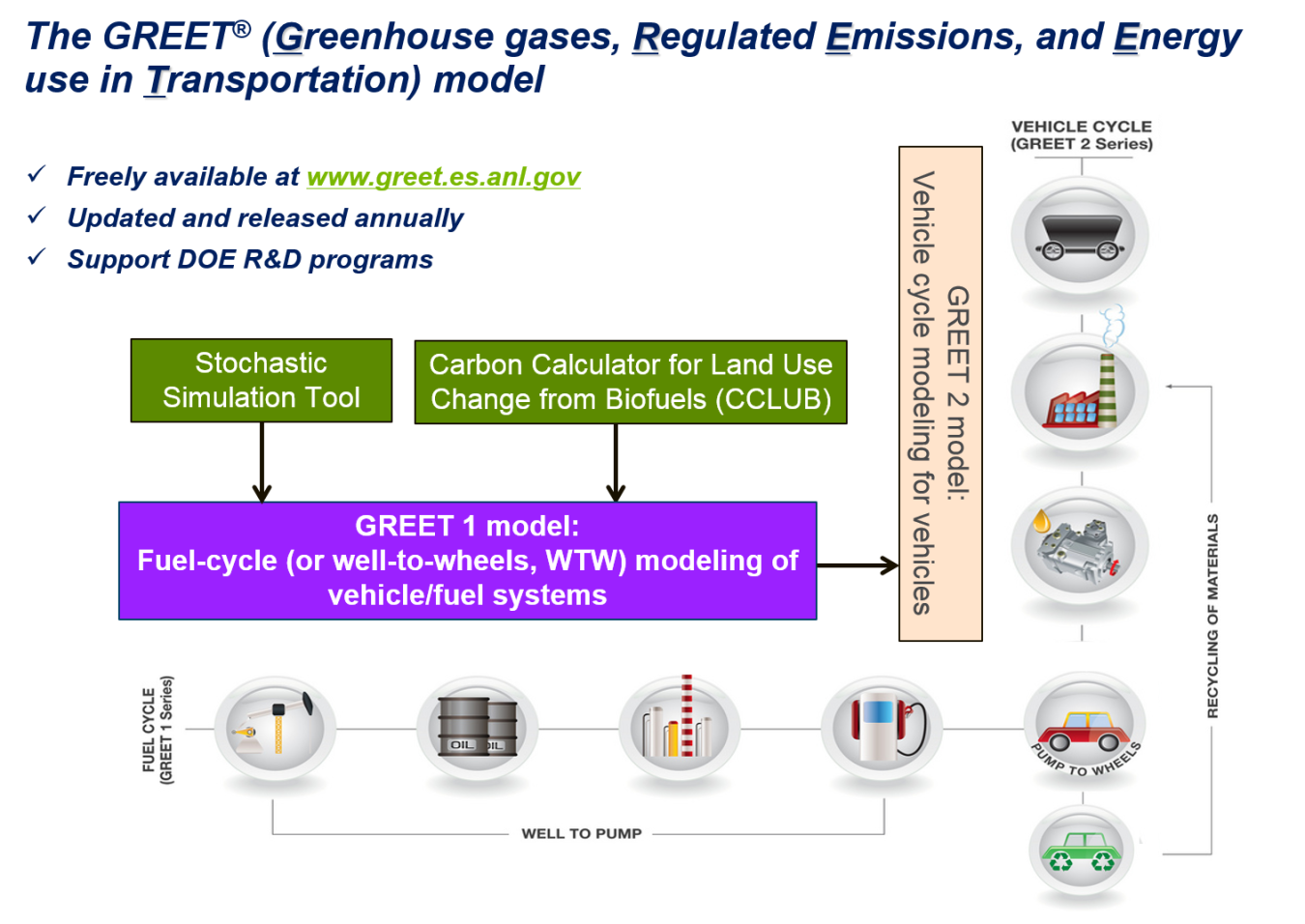Bioprose Blog: The Greenhouse Gases, Regulated Emissions, and Energy Use in Transportation (GREET) model is a tool that examines the...
May 16, 2019
BIOPROSE BLOG
The Greenhouse Gases, Regulated Emissions, and Energy Use in Transportation (GREET) model is a tool that examines the life-cycle impacts of vehicle technologies, fuels, products, and energy systems. It provides a transparent platform through which energy and vehicle producers, researchers, and regulators can evaluate energy and environmental effects of vehicle technologies and energy and product systems. For any given energy and vehicle system, GREET can calculate total energy consumption (non-renewable and renewable), emissions of air pollutants, emissions of greenhouse gases, and water consumption.

GREET development and applications are an integral part of the mission of the U.S. Department of Energy’s Bioenergy Technologies Office (BETO) and a key tool in BETO’s Analysis and Sustainability technology area. Through BETO funded projects, the Argonne National Laboratory (ANL) GREET Team, led by Dr. Michael Wang, develops a consistent model to advance understanding of sustainability of biofuels, bioproducts, and biopower and produces high-quality, peer-reviewed analyses. GREET analysis clarifies the energy and environmental benefits of biofuels, bioproducts, and biopower and pinpoints opportunities to mitigate barriers to their sustainable deployment. Finally, the supply chain sustainability analysis of key bioenergy pathways used by GREET is an important part of BETO’s efforts to quantify impacts of advancements of R&D efforts.
In addition to BETO, the EERE’s other Sustainable Transportation Offices, the Vehicle Technologies Office and the Fuel Cell Technologies Office use GREET. Beyond DOE, the GREET suite of models are used by a large field of researchers in government, industry and academia. At present, there are more than 35,000 registered GREET users worldwide. In many circles, GREET is considered the state-of-the-art model for energy and environmental analysis of transportation fuels and vehicle technologies, both emerging and conventional. GREET is widely used for biofuel life cycle analyses, including those by regulatory agencies. For example, the U.S. Environmental Protection Agency (EPA) used GREET, among other models, in its development of the regulation for the Renewable Fuels Standard in 2010. In the case of the California Air Resources Board’s (CARB) Low Carbon Fuel Standard Program, over 130 pathway have been analyzed with the CA-GREET model, a derivative of ANL GREET by CARB, to characterize fuel pathways that incorporate seven fuels from 19 feedstocks that span first and second generation feedstocks, algae, and waste feedstocks.
Continually updated by world-class researchers at ANL, GREET provides reliable calculations of life-cycle energy and emissions related to transportation, and accounts for a wide range of conventional and emerging energy systems and vehicle technologies.

